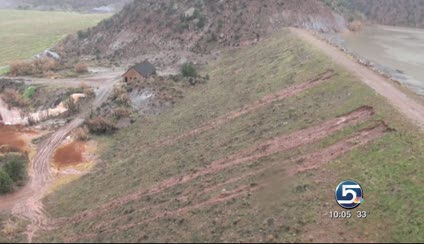Estimated read time: 1-2 minutes
This archived news story is available only for your personal, non-commercial use. Information in the story may be outdated or superseded by additional information. Reading or replaying the story in its archived form does not constitute a republication of the story.
ROCKVILLE -- The feared failure of South Creek Dam on the Trees Ranch Reservoir due to flooding Tuesday has drawn attention to privately-owned dams and how they are regulated.
Related:
South Creek is one of several privately-owned dams across the state. In Utah, these dams are regulated just as any government-owned dam -- the frequency of their inspection depends on their hazard rating.
The dam was completed in 1998 -- initially purchased by an out-of state investor and now managed by his trust. According to the Utah Division of Water Rights, it's one of the larger individually-owned dams in the state.
Safety engineers like Bret Dixon oversee all dams in the state.
"We have roughly 600 for a ballpark figure," Dixon said. "Two-hundred of those are low-hazard dams, 200 are moderate-hazard dams and 200 are high hazard."
We have roughly 600 [dams] for a ballpark figure. Two-hundred of those are low-hazard dams, 200 are moderate-hazard dams and 200 are high hazard.
–Bret Dixon
Trees Ranch falls into the high-hazard category, which Dixon says does not mean the dam is at risk for breaking. Instead, high-hazard indicates there could be significant property damage or people killed if it was to break.
"For high-hazard dams, they are inspected on a annual basis," he said.
The South Creek Dam was last inspected in April of this year. Officials found no major problems, but directed caretakers to get rid of some brush and continue taking some specific flow measurements.
They also thank caretakers on their updating of the dam's Emergency Action Plan. The majority of these dams -- including South Creek -- are used for agricultural purposes.
There are three other high-hazard dams in the same area as South Creek.
E-mail: sdallof@ksl.com









